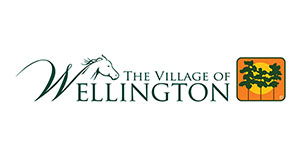Wellington’s Equestrian Preserve Committee met on Wednesday, May 1 and featured discussions on equestrian crosswalks and manure disposal.
Equestrian crosswalks are being redesigned in order to allow horses to cross roadways with safety in mind. Village Planner Ryan Harding began the discussion describing some of the changes that need input from the committee before there is a recommendation to the Wellington Village Council.
“Equestrian crosswalks will have three signs on the way up to the horse crossing,” Harding explained. “The first sign is a regular sign for horse crossing. The next two will be flashing signs. They are activated by the rider. It’s important that the rider activates the sign because this is not a stop condition for the cars. For it to become a stop condition for the cars, the signs need to be activated. Then you have two stop signs on either side to make the rider aware that they are coming up at a crossing.”
Committee Member Annabelle Garrett wanted clarification about the crosswalks. “When you say a stop condition, do you mean this is a stop condition for the rider or a stop condition for the driver?” she asked.
“For the rider, until they activate the sign.” Harding explained.
Assistant Planning, Zoning & Building Director Michael O’Dell clarified the difference.
“A mid-block crossing is a through position for the vehicle to travel through, and a stop position for the pedestrian,” O’Dell said. “So, in order for the through vehicle to allow the pedestrian to cross, the pedestrian needs to push the button. We are telling the driver he has to yield to the pedestrian.”
Committee Chair Jane Cleveland wanted to know what was new about the plan. Harding replied that added features include the rumble strips and the two extra signs.
O’Dell explained that the footing will be roughed up on the crosswalks.
“The surface of the asphalt is smooth, so we plan on roughing that surface up a bit,” he said. “There are some other products we are looking at right now, so we will see if we can add to this in the future. But now, we want to be sure to get the safety aspect of the plan complete. We want to be ready for next season.”
The consensus of the committee was to approve the plan. They would like the village to continue to consider other options for the road surface where horses cross. There will be a total of eight equestrian crossings that will be upgraded.
Next, the committee discussed horse waste removal. A transfer station where waste is being dumped and then picked up has been a concern to many residents, especially those who live in the Equestrian Preserve Area. The location is an issue, as well as the 18-yard dump trucks traveling on the village roads.
How the horse manure is handled is not the authority of the Village of Wellington, and, therefore, not an easy issue to fix. Because manure is considered an agricultural by-product, there is a state law that forbids municipalities from telling horse owners how to collect it or where to dispose of it. Right now, much of the manure is taken to the transfer station in the Equestrian Preserve Area, and trucks come to pick it up and dispose of it at approved locations.
Committee Member Carlos Arellano made it clear that residents in the preserve do not want the transfer station there.
“What bothers me is that we have an equestrian community, and we are the Equestrian Preserve Committee in order to help the equestrian community. We have been talking, we have been arguing, we have been trying to get a transfer station,” he said. “But we cannot just come over and put a transfer station in the middle of the equestrian community. I mean, we were there first. If the transfer station was here, and then we start building around it, OK, you know what you are getting into. But you cannot come to a place where people have spent a lot of money, put a nice house and barns, where everyone wants to look better than their neighbor. And on the other side, in their backyard, you put the transfer station.”
Having an alternative spot for the transfer station is a consideration, but O’Dell suggested a strategy that may take the manure disposal issue out of the Village of Wellington. He suggests expanding the responsibility to other jurisdictions, like Palm Beach County.
“The Village of Wellington does not own any specific land that would be applicable to this type of [transfer station] operation,” O’Dell said. “We are back to ‘not in my backyard.’ It’s not a Wellington problem in its entirety either, which is why we have been talking to Palm Beach County, trying to make this profitable for someone. Yes, Wellington produces a high volume [of horse waste] during season, yet the rest of the county will remain fairly consistent. So, that is a constant supply of material that someone needs in order to make something profitable out of the product.”
There can be more than one end user, he explained. “An end user could convert the waste into a fuel or recycle it,” O’Dell said.








